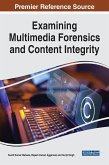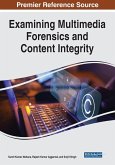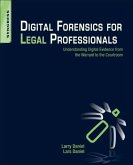Virtualized environments are growing quicker than the predicted pace, and according to OReillys computer book market report, they are the second largest computer book topic in terms of sales for 2008 with a growth of 63%. With more companies using virtual servers and environments, the ability to handle forensic data in this environment will be a necessity. This book provides forensic investigators end-to-end knowledge of examinations in server, desktop, and portable environments, including the leaders in the market: VMware, Microsoft, and Citrix.
Virtualization and Forensics: A Digital Forensic Investigators Guide to Virtual Environments offers an in-depth view into the world of virtualized environments and the implications they have on forensic investigations. Named a 2011 Best Digital Forensics Book by InfoSec Reviews, this guide gives you the end-to-end knowledge needed to identify server, desktop, and portable virtual environments, including: VMware, Parallels, Microsoft, and Sun. It covers technological advances in virtualization tools, methods, and issues in digital forensic investigations, and explores trends and emerging technologies surrounding virtualization technology.
This book consists of three parts. Part I explains the process of virtualization and the different types of virtualized environments. Part II details how virtualization interacts with the basic forensic process, describing the methods used to find virtualization artifacts in dead and live environments as well as identifying the virtual activities that affect the examination process. Part III addresses advanced virtualization issues, such as the challenges of virtualized environments, cloud computing, and the future of virtualization.
This book will be a valuable resource for forensic investigators (corporate and law enforcement) and incident response professionals.
Virtualization and Forensics: A Digital Forensic Investigators Guide to Virtual Environments offers an in-depth view into the world of virtualized environments and the implications they have on forensic investigations. Named a 2011 Best Digital Forensics Book by InfoSec Reviews, this guide gives you the end-to-end knowledge needed to identify server, desktop, and portable virtual environments, including: VMware, Parallels, Microsoft, and Sun. It covers technological advances in virtualization tools, methods, and issues in digital forensic investigations, and explores trends and emerging technologies surrounding virtualization technology.
This book consists of three parts. Part I explains the process of virtualization and the different types of virtualized environments. Part II details how virtualization interacts with the basic forensic process, describing the methods used to find virtualization artifacts in dead and live environments as well as identifying the virtual activities that affect the examination process. Part III addresses advanced virtualization issues, such as the challenges of virtualized environments, cloud computing, and the future of virtualization.
This book will be a valuable resource for forensic investigators (corporate and law enforcement) and incident response professionals.








